#iconic morro moment
Explore tagged Tumblr posts
Text

Eight years ago we were introduced to an icon, Morro.
#ninjago#ninjago fanart#fanart#ninjago morro#lego ninjago#morro wu#ninjago lloyd#lloyd garmadon#I feel like this is an must draw Morro moment#morro moment#iconic morro moment#art#artist
1K notes
·
View notes
Note
May we have some badguyshipping headcanons? And maybe learn Wu’s reaction to seeing his son date former(current??) bad guys?
Wait… Did Harumi try pulling what she did to Lloyd on canon on Morro? And she dragged Echo along with her?
IT'S LORE TIME, BABY~
ninjas' team and lloyd (who did not want to be there) met harumi (and echo) in line with canonical events and it was a love at first sight, but only for morro. harumi had other plans, in which she ignors and doesn't acknowledge his existence while having a typical teen girls' crush on older guy who, reasonably had many reasons to try and run away from them. and we goes like that till crystalized.
and to explain a little more, harumi doesn't hate lloyd in here. while the team and garmadon were dealing with great devourer in season 2, lloyd knew he couldn't do much as he's not a fighter, he can't use his powers intentionally (he does it accidentaly in the end but still), he would go for a sure death, so he did all he could and helped escorting people out from the danger zone and he actually rescued little harumi. garmadon was a hero, he saved ninjago, but lloyd was her hero. she litteraly wanted to reunite son and father in season 8, but it all went wrong and we have exactly same shit going on as in oni trilogy.
harumi is obsessed with lloyd in the end understanding that he's old and she's a god damn weirdo (girl, leave him alone, he has a puppy and boyfriend and HE'S TOO OLD FOR YOU), morro has multiply mental breakdowns and grows up to accept that he can't make someone love him, love will come by itself to him (give me cute cousins moment with lloyd being intelligent for the first time in his life), and echo is happy to be there (he deserves all the hugs)
and than, no one knows why or how, things happened AND BOOM they're in love.

for the headcanons:
-their love aroused over my chemical romance and my little pony
that's all. the rest is just FACTS and facts only.
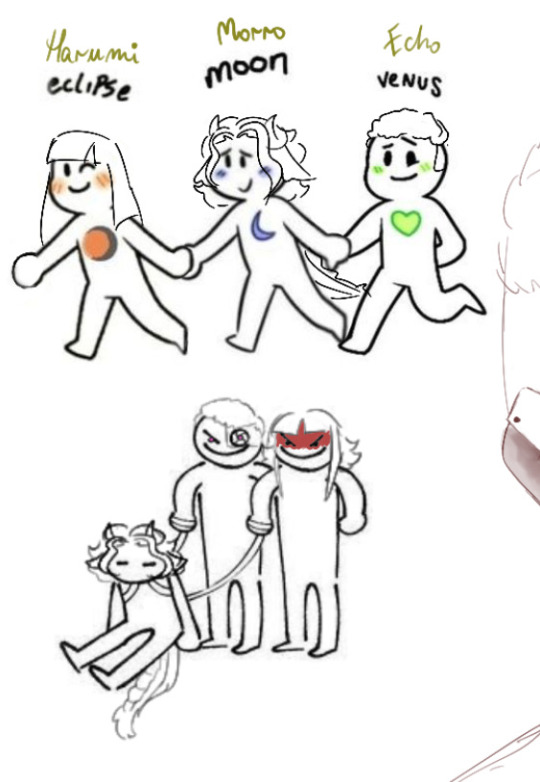
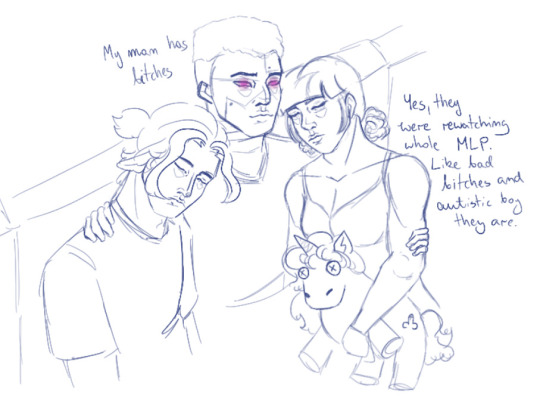
echo is a true romantic. for him love always wins. for him, there always his partners to love. he's neat.
also them getting to have their teen years as a couple is what i live for. even if only a little, it still works. were they drinking heavily? no, it was a capri sun. were they smoking? no, they're too cool and poor for this. were they doing crack. yes.
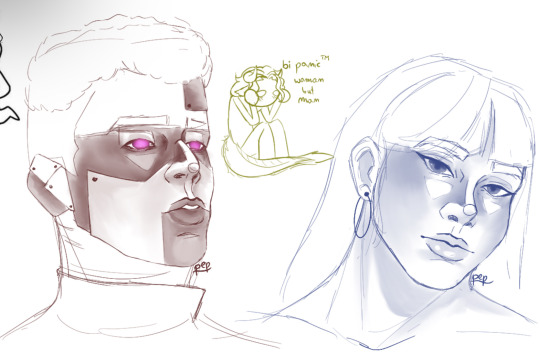
morro is bi. bi himself. and two bad bitches he pulled out by being autistic.
like, rumi and echo are walking fushion icons, baddest of the bad bitches, they slay while doing crimes, charming and deadly beautiful/handsome
and wu is surprisingly supportive :)
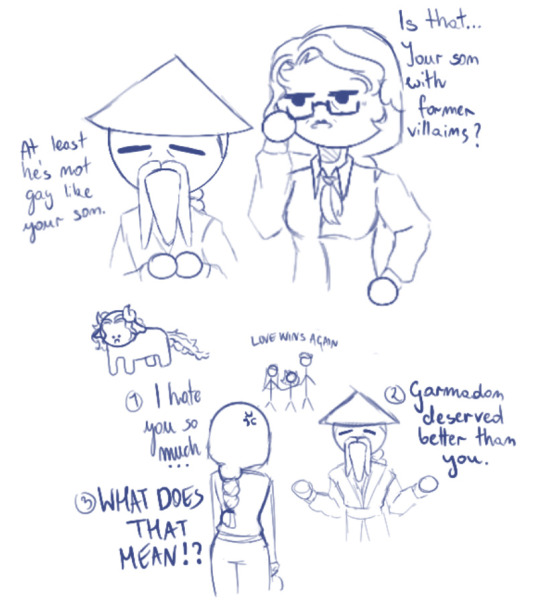
and really competitive with misako. they hate each other so badly. trans woman that destroyed his (also trans, but he forgets about this. he actually refused to remember he ever had a sister in his life, because he didn't, it never happened, life is a simulation and everyone made it up) brother (not really, actually made him really happy) and garmadon was never the same
oh, and one more thing
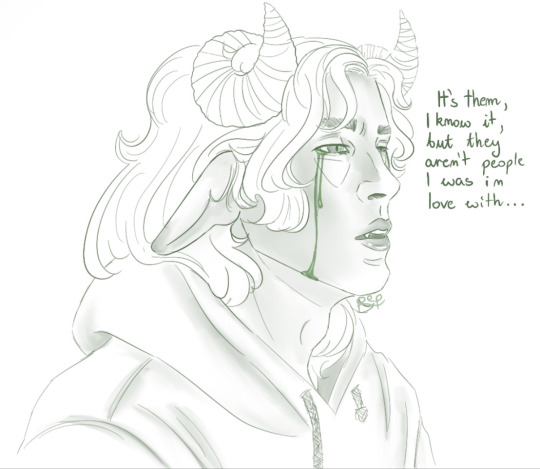
in dragons rising, they are divorced
I DON'T BELIEVE IN THE HAPPY ENDING FOR THEM
#i'm sorry it took so long 😭 i'm horrible bad person i'm so sorry#ninjago#lego ninjago#lego#green rejection au#ninjago au#dragon morro#ninjago morro#morro ninjago#ninjago lloyd#lloyd ninjago#ninjago harumi#harumi ninjago#echo zane#echo ninjago#ninjago mr. e#garmadon ninjago#ninjago misako#trans misako#trans garmadon#ninjago wu#sensei wu ninjago#wu ninjago#art#lego art#ninjago art#digital art#dragons rising#they deserves everything but not in dragons rising. they need to suffer there#just my way to say that some things changes and you can't help it sometimes. it's hard but life works like that
25 notes
·
View notes
Text




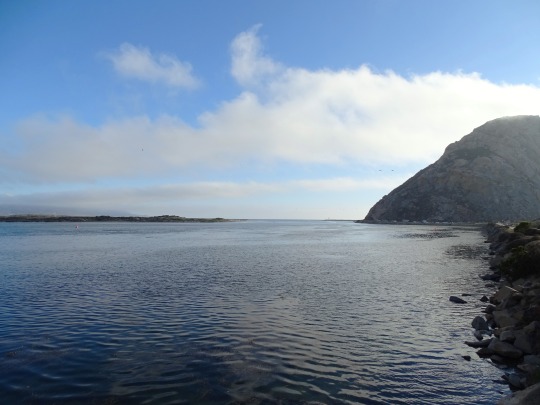
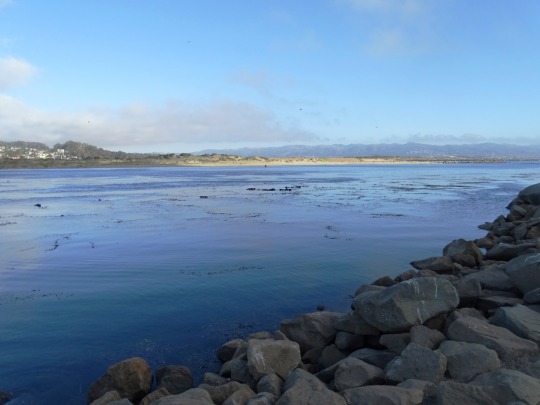
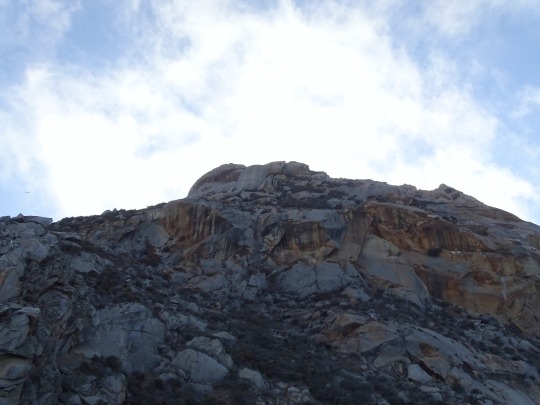
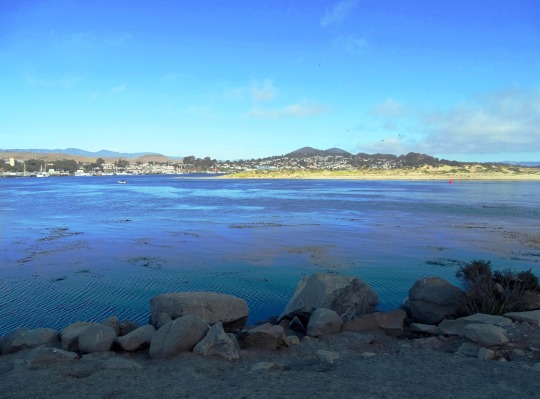
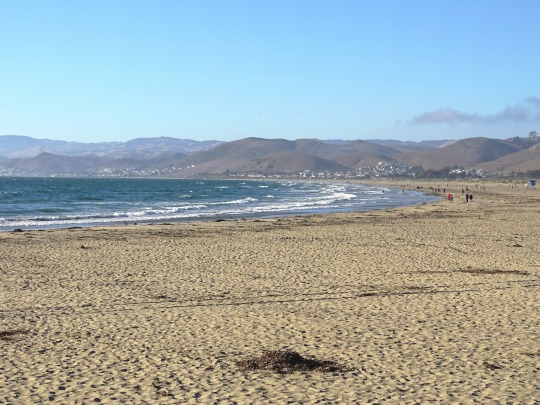
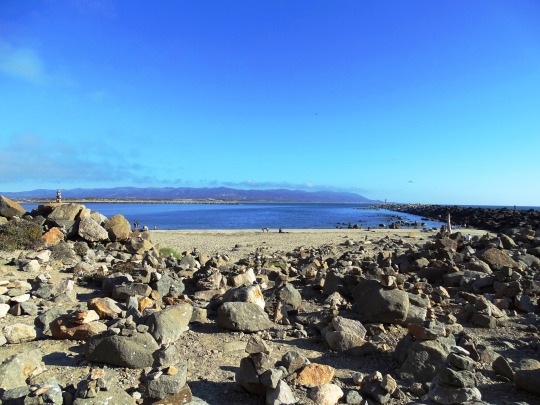
Morro Rock Ecological Preserve, CA (No. 8)
With an oceanfront parking lot located directly under the shadow of awe-inspiring Morro Rock, this popular surf spot is as close to the rock as it gets. Although technically part of Morro Strand, this beach is often referred to as Morro Rock Beach by locals and travelers alike, for reasons that will become obvious the moment you arrive. Easily stroll the base of Morro Rock, keeping an eye out for seabirds (fun fact: the rock is the last of “the nine sisters,” or volcanic mountains that run from the Central Coast to Southern California). Today, Morro Rock is a historic landmark and bird sanctuary home to Peregrine Falcons, Seagulls and all manner of waterfowl which thrive along the rocky landscape. Surfers, picnickers, kite-flyers and sunbathers flock to the beach located just north of the rock, while the south side—protected by the harbor—is popular among kayakers and fishing enthusiasts. Planning on staying in San Simeon or Cambria, two popular Central Coast kayaking destinations in their own right? We encourage you to bring your kayak south to Morro Bay for a unique experience unlike what you’ve already enjoyed. While you might see whales and elephant seals to the north on Highway 1, Morro Bay features its own menagerie of critters, including friendly harbor seals and a year-round otter population that can be observed regularly snacking, napping, and communing among Morro Bay’s plentiful kelp beds.
Similarly, surfers staying in Cayucos love the close proximity to Morro Rock—known as one of the most popular surf spots on the Central Coast. Why not rent a board and catch a few iconic waves for yourself? Depending on the swell, you can also paddle across the harbor side to Sand Spit beach (also accessible from the Los Osos side). Large waves are common here, so it’s important to watch kids while they play in the water (lifeguards are staffed from Memorial Day Labor Day from 10am-6pm). Please note that dogs must be on-leash in this area, but they are welcome to roam freely at the Morro Bay Dog Beach, which stretches six miles north to dog-friendly town Cayucos. With its vast, sandy beach and views of Morro Rock in the distance, you’ll enjoy the walk just as much as your pup. Lastly, parking at Morro Rock Beach is a breeze: just take your pick of spots in this massive parking lot with bathrooms and outdoor showers to clean off sandy toes. Plus, parking wraps south of the rock, providing even more convenience for busy days (you’ll enjoy even greater views of the rock, local wildlife, and glittering back bay as you park the car). That’s a true win-win!
Source
#Morro Rock Beach#Morro Rock Ecological Preserve#Morro Rock#Morro Bay#Pacific Ocean#sailing boat#Morro Bay Harbor#evening light#flora#nature#geology#volcanic plug#Santa Lucia Range#Nine Sisters#San Luis Obispo County#travel#original photography#vacation#tourist attraction#landmark#cityscape#landscape#seascape#summer 2022#USA#architecture
3 notes
·
View notes
Text
Rio de Janeiro - RJ
Rio de Janeiro (Set. 2024, 7 and 8)

Rio de Janeiro, affectionately known as the "Marvelous City," is one of the most iconic destinations in Brazil and the world. With its stunning beaches like Copacabana and Ipanema, the Christ the Redeemer statue watching over the city from the top of Corcovado Mountain, and Sugarloaf Mountain offering spectacular views of Guanabara Bay, Rio is a true postcard city.
Beyond its natural beauty, the city is vibrant and culturally rich, hosting the famous Carnival with its samba school parades and street parties that attract millions of visitors every year. The blend of modernity with cultural traditions makes Rio de Janeiro a unique place, full of energy, joy, and hospitality.
Christ the Redeemer: Christ the Redeemer, one of the New Seven Wonders of the World, is an iconic symbol of Rio de Janeiro and Brazil. Located atop Corcovado Mountain, the 30-meter-tall statue with outstretched arms represents peace and welcome. Inaugurated in 1931, the monument was designed by engineer Heitor da Silva Costa and sculpted by French artist Paul Landowski.

hrist the Redeemer: Christ the Redeemer, one of the New Seven Wonders of the World, is an iconic symbol of Rio de Janeiro and Brazil. Located atop Corcovado Mountain, the 30-meter-tall statue with outstretched arms represents peace and welcome. Inaugurated in 1931, the monument was designed by engineer Heitor da Silva Costa and sculpted by French artist Paul Landowski.

Sugarloaf Mountain: Sugarloaf Mountain is one of the most recognized landmarks of Rio de Janeiro and one of the city's most visited tourist attractions. This impressive granite monolith, rising 396 meters above sea level, stands at the entrance of Guanabara Bay, offering spectacular views of the city, the sea, and the surrounding mountains.

To reach the summit, visitors can take the famous cable car, which departs from Praia Vermelha and stops at Morro da Urca before continuing to the top. From there, it's possible to admire the stunning landscape, including Christ the Redeemer, Copacabana Beach, and the coastline stretching to the horizon. Sugarloaf Mountain is a symbol of Rio de Janeiro's natural beauty, combining the majesty of nature with the city's vibrant energy.

Pedra do Leme: Pedra do Leme is one of Rio de Janeiro's lesser-known but equally stunning attractions. Located at the far left of Leme Beach, which is an extension of the famous Copacabana Beach, the rock offers a serene landscape and impressive views of the coast.

Climbing to the top via a trail, visitors are rewarded with a panoramic view that encompasses the Atlantic Ocean, the beaches, and even Sugarloaf Mountain. Pedra do Leme is a peaceful refuge, ideal for those seeking a moment of tranquility away from the city's hustle and bustle.

Forte Duque de Caxias: Forte Duque de Caxias, located at the base of Pedra do Leme, is an important historical and military landmark in Rio de Janeiro. Built in the 18th century to defend the entrance to Guanabara Bay, the fort played a significant role in protecting the city from foreign invasions.

Today, the site is open to the public, offering a unique experience that combines history and nature. As visitors ascend the trail leading to the fort, they not only have the opportunity to explore the military facilities but also enjoy spectacular views of Rio's coastline and Sugarloaf Mountain. Forte Duque de Caxias is a testament to Rio's rich historical heritage, preserving memories of the past while offering an intimate connection with the surrounding natural beauty.
RIO`S MAP:

0 notes
Text

Rio de Janeiro is not a city. It's a feeling. From the bustling streets of Copacabana to the vibrant energy of Lapa, every corner of Rio pulses with life, color, and rhythm. But if you want to truly capture the essence of this magical place, there's no better way than to witness a Rio sunset.
Whether you're using the latest high-tech camera or your trusty smartphone, here's how to catch that perfect sunset shot:
Choose Your Spot: For the most breathtaking views, head to the iconic Sugarloaf Mountain or Christ the Redeemer. If you prefer a more relaxed atmosphere, the beaches of Ipanema and Arpoador offer stunning oceanfront sunsets.
Timing is Everything: Aim to arrive about an hour before sunset to find the perfect spot and set up your gear. This also gives you time to capture the beautiful golden hour light.
Composition is Key: Use the rule of thirds to place the sun and landscape in your frame. Include elements like the silhouette of the city, mountains, or the sea to add depth and interest to your shot.
Adjust Your Settings: If you're using a DSLR or mirrorless camera, set your aperture to a higher value (f/8 or higher) to keep more of the scene in focus. Lower the ISO to reduce noise and set a slower shutter speed to capture the rich colors of the sunset.
Embrace the Moment: Sometimes, the best photos come when you least expect them. Keep shooting, experiment with angles, and most importantly, soak in the beauty of the moment.
In Rio, every sunset is a reminder of the city's unparalleled charm and beauty. It's a feeling that stays with you long after the sun dips below the horizon. Capture it with your camera, but more importantly, with your heart.
The best places to see the sunset in Rio de
Janeiro are:
Sugarloaf Mountain (Pão de Açúcar): Why: Offers a panoramic view of Rio de Janeiro, including the beaches, mountains, and the cityscape.
Tips: Take the cable car up in the late afternoon to catch the sunset from the top. The view is breathtaking, and the colors of the sunset reflecting off the bay are spectacular.
Arpoador Rock (Pedra do Arpoador):
Why: Located between Ipanema and Copacabana beaches, it's a popular spot for both locals and tourists.
Tips: Arrive early to grab a good spot, as it can get crowded. Enjoy the stunning view of the sun setting over the ocean, with the Morro Dois Irmãos in the background.
Ipanema Beach:
Why: Famous for its beautiful sunsets and vibrant beach culture.
Tips: Find a spot near Posto 9 for a classic Rio sunset experience. The sight of the sun dipping into the Atlantic, with the mountains in the distance, is unforgettable.
#riodejaneiro #travelphotography
1 note
·
View note
Text

Rio de Janeiro: Where Every Sunset Tells a Story / TIPS PICS 👉 https://bysumex.com/rio-de-janeiro-where-every-sunset-tells-a-story-tips-pics/
Rio de Janeiro is not a city. It’s a feeling. From the bustling streets of Copacabana to the vibrant energy of Lapa, every corner of Rio pulses with life, color, and rhythm. But if you want to truly capture the essence of this magical place, there’s no better way than to witness a Rio sunset.
Whether you’re using the latest high-tech camera or your trusty smartphone, here’s how to catch that perfect sunset shot:
Choose Your Spot: For the most breathtaking views, head to the iconic Sugarloaf Mountain or Christ the Redeemer. If you prefer a more relaxed atmosphere, the beaches of Ipanema and Arpoador offer stunning oceanfront sunsets.
Timing is Everything: Aim to arrive about an hour before sunset to find the perfect spot and set up your gear. This also gives you time to capture the beautiful golden hour light.
Composition is Key: Use the rule of thirds to place the sun and landscape in your frame. Include elements like the silhouette of the city, mountains, or the sea to add depth and interest to your shot.
Adjust Your Settings: If you’re using a DSLR or mirrorless camera, set your aperture to a higher value (f/8 or higher) to keep more of the scene in focus. Lower the ISO to reduce noise and set a slower shutter speed to capture the rich colors of the sunset.
Embrace the Moment: Sometimes, the best photos come when you least expect them. Keep shooting, experiment with angles, and most importantly, soak in the beauty of the moment.
In Rio, every sunset is a reminder of the city’s unparalleled charm and beauty. It’s a feeling that stays with you long after the sun dips below the horizon. Capture it with your camera, but more importantly, with your heart.
The best places to see the sunset in Rio de Janeiro are:
Sugarloaf Mountain (Pão de Açúcar):
Why: Offers a panoramic view of Rio de Janeiro, including the beaches, mountains, and the cityscape.
Tips: Take the cable car up in the late afternoon to catch the sunset from the top. The view is breathtaking, and the colors of the sunset reflecting off the bay are spectacular.
Arpoador Rock (Pedra do Arpoador):
Why: Located between Ipanema and Copacabana beaches, it’s a popular spot for both locals and tourists.
Tips: Arrive early to grab a good spot, as it can get crowded. Enjoy the stunning view of the sun setting over the ocean, with the Morro Dois Irmãos in the background.
Ipanema Beach:
Why: Famous for its beautiful sunsets and vibrant beach culture.
Tips: Find a spot near Posto 9 for a classic Rio sunset experience. The sight of the sun dipping into the Atlantic, with the mountains in the distance, is unforgettable.
Vista Chinesa:
Why: Offers a unique, elevated view of Rio, with a picturesque Chinese-style pavilion as a foreground.
Tips: Located in Tijuca National Park, it’s a bit of a drive, but the view of the city, especially at sunset, is worth it.
Morro da Urca:
Why: The smaller mountain next to Sugarloaf provides equally stunning views with fewer crowds.
Tips: You can hike up or take the cable car. Enjoy a more relaxed atmosphere while watching the sun set over Guanabara Bay.
Leblon Lookout (Mirante do Leblon):
Why: Provides a stunning view of Ipanema and Leblon beaches with the sun setting over the ocean.
Tips: A perfect spot if you want to capture the urban beach vibe of Rio with the setting sun.
Each of these spots offers a unique perspective of Rio’s natural beauty and vibrant culture, making sunset a magical time in this incredible city.
#riodejaneiro #travelphotography #brazil
0 notes
Text
Ninjago Tierlist

My new and updated Ninjago Season/Special ranking! I just wanna start off by saying that Ninjago is my favorite piece of media - ever. Nothing will make me hate this show, and while I definitely see the flaws in a lot of the show, it still brings me more joy than anything. Also this is all opinion based, so if you disagree, keep it civil and polite Written ranking and explanation under the cut!
S Tier: - Hunted: My favorite season of all time. I love the focus that was given to the OG 4, and Wu’s development. Also the fight against Garmadon was great, and I felt it was a more ‘intense’ season that still kept the childlike nature it was supposed to have. My only gripe is how they treated Nya - Seabound: Basically tied for favorite season of all time. Nya is my favorite character, so I really liked this season. Exploring her relationship with her family and the team, while also showing her anger issues really vibed with me. Also, Kalmaar is one of my favorite villains too A Tier: - Master of the Mountain: Another banger of a season. Seeing Cole’s past and how he took those lessons from his mother was something I very much loved. The Skull Sorcerer was kinda basic, but I enjoyed the fight scenes, the jokes, and especially Adam the Spider. - Skybound: This season had Jay at his best. The character growth in how he treats Nya and becomes a real badass, I love it. Nadakhan is also a boss, I hope we see him again one day. - Rise of the Snakes: In my opinion, this is the most memorable Ninjago season. The Serpentine were a really awesome group of bad guys, and Pythor especially was great. Having to team up with Garmadon is really great too. - Prime Empire: I really liked the animation in this season, and how the ninja explored the digital world. Unagami’s story was really cool too! Detective Zane stole his scenes, and of course we have to talk about the badass dance competition scene. I love how this delved more into Jaya - Posession: *chef’s kiss* I legitimatley cannot think of anything bad about this season. I can’t. Morro is great, Ronin is great, Kai being a big brother is great. The only reason it isn’t much higher is because I just like the others more B Tier: - Sons of Garmadon: The animation and design changes aren’t too jarring for me, and I actually like them. The opening season to the absolutely awesome Oni Trilogy. Had really good lore moments, and I feel they treated everyone awesomely. Also, the prison fight will always be iconic - Secrets of Forbidden Spinjitzu (Ice Chapter): More realms is always a plus in my book. Zane was freaking fantastic, and I loved Kai’s growth here. I do wish Lloyd didn’t have as big of a focus, but I understand that he is supposed to be the most “main character” of all the main characters - Legacy of the Green Ninja: A very good season, but I really haven’t watched it in a while. Its good, and has great moments, but it is just kinda forgettable to me. Except for the Final Battle, that part is burned into my head - Crystalized: While I do see that it has a lot of issues, it never really bothered me while watching it. They did the best with what they had, and I enjoyed watching it. I do wish that the villains were more intimidating here, but oh well. Oni Lloyd was cool for the 30 seconds he was around, but Garmadon being badass & loving Christofern stole the season for me. Also the Wu v. Overlord fight is top three fight scenes, ever. - Dragon’s Rising Part 1: It was a good start to the new series. I do miss the OG ninja, but Arin and Sora have good development so far! The new lore is pretty cool, and I’m excited to see where it is going! C Tier: - Pilots: A good first couple of episodes. Doesn’t get too big, but does a good job with what it has. A good middle of the road ‘season’. Do love the nostalgia too - Rebooted: A decent season; I liked what they did with Pythor and the Overlord too. The whole love triangle thing was cringe though. - March of the Oni: Could have been so much better, could have been so much worse. Garmadon’s Oni form was hideous, but his interactions with Lloyd were cool. Cole’s ‘death’ was emotional, and the reforging of the Golden Weapons was nice too - Secrets of Forbidden Spinjitzu (Fire Chapter): Eh... it was alright. My favorite part is mainly REVENGE! REVENGE! REVEEEEEEENGE! Will always get a laugh out of me. Loved seeing the Ninjago citizens kinda just going about their day while everything around them gets destroyed too, lol - Hands of Time: Honestly I watched this season only once, and I never really liked the animation stuff. It had a good story and I loved that stuff, but it never stood out to me - Tournament of Elements: I honestly forget this exists when I think of Ninjago stuff. A decent season, but the parts that stick out are Chen’s hilariousness and Skylor D Tier: - The Island: Meh. It was alright. The lore it introduced was cool, but I wish Ronin’s character development hadn’t been shot down - Day of the Departed: Laughable in my opinion. Yang was great and Cole was great. It could have been better if they had made it a season, but oh well. The villains were kinda a joke too
1 note
·
View note
Text
Head empty~
So Nindroid headcanons! :D
-Cryptor religiously listens to Mag.lo
- Pixal and Zane could care less about gender norms and love to wear what they like. Queue Zane wearing cottagecore dresses and Pixal in Alt eboy clothes
-Mindroid has an obsession with ducks. No real reason he just thinks they are evil.
- since Pixal lives with the ninja now she gave every pastel thing of hers to echo. She basically gave that boi her whole room and closet of clothes.
-Once at a pond Cryptor and Mindroid found a nest of ducklings. Said ducklings imprinted on Cryptor. Cryptor is now the mother of 6 very handsome duck babies and Mindroid acts as the rich auntie.
- Zane loves gardening
-Pixal likes watching anime and TLC when the ninja are gone
-Mindroid and Cryptor unironically like kids bop
-Echo loves bees. He spends most of his time with Zane in the garden because of that. He also loves bugs in general
-The Borg family basically adopted Morro once he was redeemed. Cryptor takes him to the mall all the time, Borg let's him help around in the office, Mindroid likes hearing him read books, Pixal helps him with his fears and helps him come back with the times, Zane convinces the ninja that he means well, and Echo likes decorating his room and buying Morro plushies
-Cryptor likes mall pretzels
-Pixal babysits
-Zane enjoys watching RuPaul's drag race
-Mindroid has a Shrek onesie
-Echo likes teen graphic novels. His favorite at the moment is Laura Dean keeps breaking up with me
-Zane tries to teach all of Borg tower how to bake (ends up catching the building on fire)
-The Nindroid warriors are babey (no joke or cap, literally canon)
-Morro helps pixal babysit sometimes
-Cryptor loves garlic
-Borg is Latino
-Borg adopts literally anything
-Pixal has an army of hamsters
-Mindroid is a history buff
- Echo likes to make stickers and draw
-Cryptor likes to knit and sew
-Sentry is the embodiment of joy
-Pixal is secretly a elemental master
-Cryptor is still haunted by the Overlord, he often vomits black goo and puss
-Zane is a fashion icon.
-Pixal is goblincore but Alt too
#thenuggetstealer#ninjago#ninjago cryptor#ninjago echo zane#ninjago zane#ninjago pixal#ninjago morro#ninjago cyrus borg#ninjago sentry#ninjago mindroid#wow i havent posted them in a while#im so so sorry#nindroids
82 notes
·
View notes
Text
Pirates of the Caribbean
This is an ask from @shrigma-male, but i accidentally deleted the ask.. so sorry! I am high key excited to get an ask about this topic, as the Pirates of the Caribbean ride is probably one of my earliest animatronic centric obsessions. not only is it one of the earliest and most impressive feats of Imagineering, it also remains solid to this day. it houses a great many iconic animatronic figurines, all of which work together in perfect harmony to capture beautifully life filled scenes of a cohesive storyline. Its individual ride concept was so strong that it birthed a line of clones and even a famous movie franchise. isn’t that sick? a RIDE was the key source material for a whole movie series! but it’s unsurprising, with the time and care poured into the ride. Unfortunately, or fortunately depending on how you think about it, the ride is JAM PACKED so there is a LOT to talk about. This will only be a super brief post information-wise, but who knows? There may be more to come if this performs well. Apologies, my life’s not going great at the moment and i don’t have a lot of spare time so this is not as high a quality as i would like it to be.
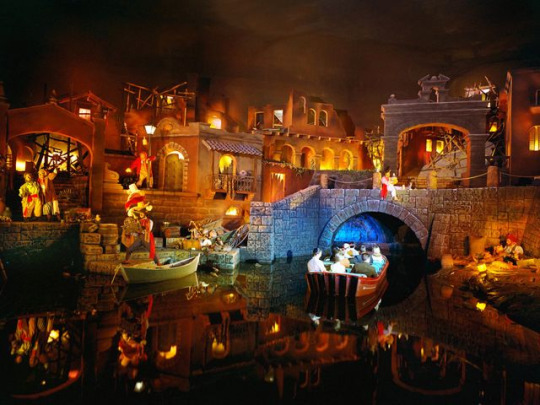
Here’s my fast fact file on it!
Debut: March 16, 1967
Withdrawal: All rides are still operating
Attraction: The Pirates of the Caribbean
Locations: Disneyland, Magic Kingdom, Tokyo Disneyland, Disneyland Paris, Shanghai Disney (but this one’s heavily modified)
Attraction Type: Dark ride
Riders Per Vehicle: 23–24
Number of vehicles: 50
Animatronics: 119 ish but it depends on the ride version
Ride videos: The entire ride varies from version to version and different people want to see different parts. i’m leaving you guys to find your own ride videos. it’s a very popular ride, just type on in to youtube and you’ll find heaps of nice high quality ones.
The thing that stands out about this ride is the theming and the sheer amount of effort put in to creating an immersive environment. the ride houses an impressive 119 audio animatronics, 53 of which are animals. There are 630,000 gallons of water in the ride (original Disneyland) and takes three whole days to drain. there are over 40,000 gold coins in the treasure room scene alone. It holds what could possibly be considered Disney’s first themed restaurant which can be seen at the start of the ride. It is objectively one of the coolest things I’ve ever ridden. I want to call specific attention to the boat scene, where cannons fare at each other from opposite ships, creating glowing impacts and throwing water about. the first time I rode it it ensnared my attention and completely suspended my disbelief.The ride system is based on the one used in it’s a small world, due to that rides incredible success in debuting a boat-based transport system. Although I hate it’s a small world with a burning passion and refuse to write anything on it, I must be forced to admit that it did wonders as a test on how to create a good dark ride, emphasising key features such as a high rider capacity, boat-based transport system, and proving that animatronics are an incredibly attractive key event. Since the 60’s when it debuted, the Pirates of the Caribbean ride has gone through many changes throughout its location, including entire scenes being added and removed. but what it has maintained throughout its historic run time is its notoriety and splendour. the key change that I will bring up is the 2006 and 2007 renovations that include more theming from the very successful movie franchise. slightly unrelated, but the song “Yo ho, a pirate’s life for me” was actually first written for the ride. The rides are all being constantly updated in minor ways whether it’s slightly improving the animatronics, touching up background details or changing costuming. I’ll attach here a brief sort of timeline of the ride that I’ve whipped up here, but it only touches on the most notable modifications. sorry about how crap-tier it is..

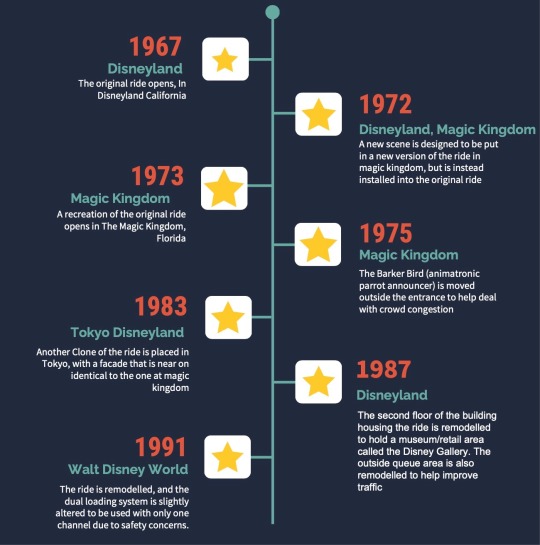

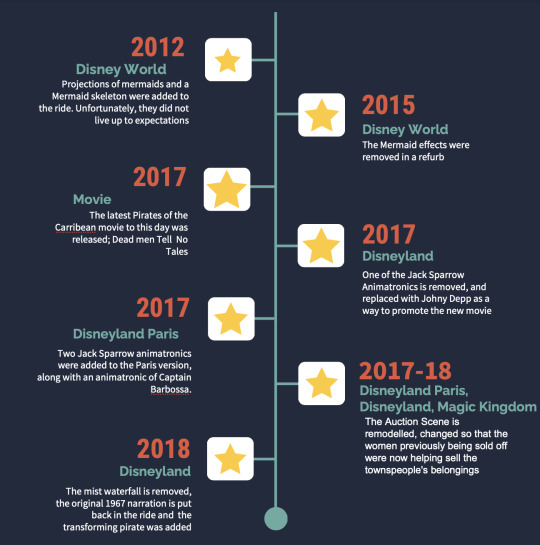
Now, to talk more specifically about animatronics. The animatronics used on this ride are some of the earliest made by Disney. some are really quite basic, with their full range of motions being a singular full body action such as raising and lowering out of a barrel, but others move heads and arms in (sort of) lifelike actions. Some are newer, (specifically captain Jack Sparrow), but most are the original ones from the 60’s. One of my (and everyone’s tbh) favourites is the redheaded lady. She is (very originally) named Redd. Previously she was being sold off for auction, but in 2018 she was swapped to being an auctioneer. She has stunning red curls and a beautiful dress to match, and now holds a gun. here’s a little before and after.
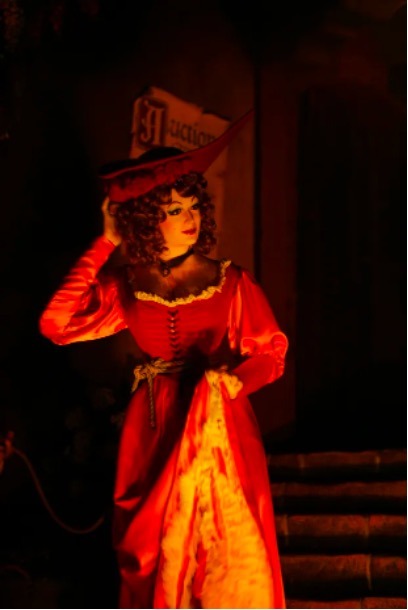

in the same refurbishment that changed her the mist screen in the tunnel before the fort battle was removed and replaced with a pirate in a cage who turns into a skeleton via an optical trick as well as an octopus playing with some medallions, along with the original 1967 narration about cursed treasure being restored. Her new version is based off none other than Anne Bonny herself (worth a google, she’s a fucking BOSS (like seriously!! Queer history icon!!! LOOK 👏 HER 👏 UP 👏 )) . She’s also displayed in dead man’s cove in a portrait, which I think is kinda neat. Her Paris version is completely silent, but the others yell about selling rum. Sadly I have never actually seen the new Redd in person, as I have only ridden the ride in Tokyo (where she is still being sold).

Now, the barker bird! oh how I love him so <3 he’s a little green pirate parrot, who spent his days crying about the ride. he was originally in the queue area but got kicked outside eventually to help deal with crowd control. he was then gotten rid of in 2006 in the big movie refurb. He was remarkably similar to the original barker bird who resided outside of the Enchanted Tikki Room; however, the pirate version has a peg leg, eye patch, tattoo on his chest and wondrously villainous hat. he was originally based off of Captain Flint, the parrot from Treasure Island. It is theorised that he has a skeletal clone inside the ride; the parrot belonging to “the Dirty Feet pirate”.
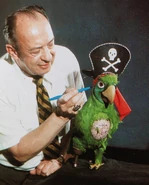
When you first get on the ride, the first animatronic you come across is Old Joe. he is an animatronic character used in multiple different attractions, including Liberty Belle Riverboat, The Western River and Mark Twain Riverboat. in each version, he lives in a shack and is associated with the banjo. I say associated because it is actually a really common misconception that he actually plays the banjo. he does not, it is just a dark scene and there is banjo music playing around him. you can see the tip of his pipe glowing as you approach it in the ride, lit up alongside the fireflies. he is a small taste of what is to come.
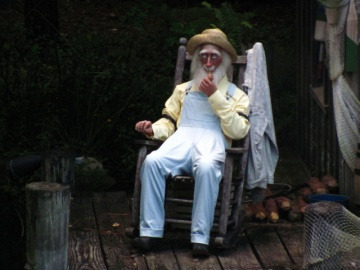
Barbossa replaced the original pirate captain of The Wicked Wench in the boat battle scene in the mass movie renovation. he is my tied favourite with the redhead, as his dialog adds so much to the scene. his character moves in a beautiful fashion, lit up by a spotlight. His face is artfully painted, capturing what I believe to be the most human expression in the entire ride. His boat is fighting a Castillo del Morro fortress of Isla Tesoro, whilst busy searching for treasure and presumably captain jack sparrow. in 2011 his WDW version’s outfit was swapped over to his privateer uniform from On Stranger Tides, to keep the ride tied to the movies. What can be considered quite odd is that in Paris’s later renovation, the Captain did not replace the Wicked Wench captain, and was rather added in to a scene at the end of the ride, in the skeleton grotto. he is standing on the shipwreck beside the skeleton helmsman, carrying a lantern.

The auctioneer. I don’t like him. greasy man. his eyes are wild. He’s originally voiced by Paul Frees (an icon, a legend) and is inspired by Captain Bartholomew Roberts (considered the most successful pirate in the golden age of piracy. He is also a pirate from the ship The Wicked Wench, and his auction is set up near a canteen called "La Cantina”. very creative. He was originally selling brides (human trafficking, not very snazzy) but now he sells chickens he stole from townspeople. however, this is unsuccessful. In the Paris version, instead of the chickens he is trying to sell a painting of Jean Laffite. Funnily enough, Jean is one of Disney’s sort of “stand in” pirate characters that they frequently just use whenever they need a pirate to slide in. Unfortunately, the auctioneer is always kept relatively up to date with the shiniest, newest technology that Disney can spare, and is always one of the most advanced figures on the ride. doesn’t deserve it, he’s slimy and I don’t like him. I should probably mention that he doesn’t actually have a name other than the auctioneer. There’s also a clone of him used in the haunted mansion for the duelling animatronics. loser.
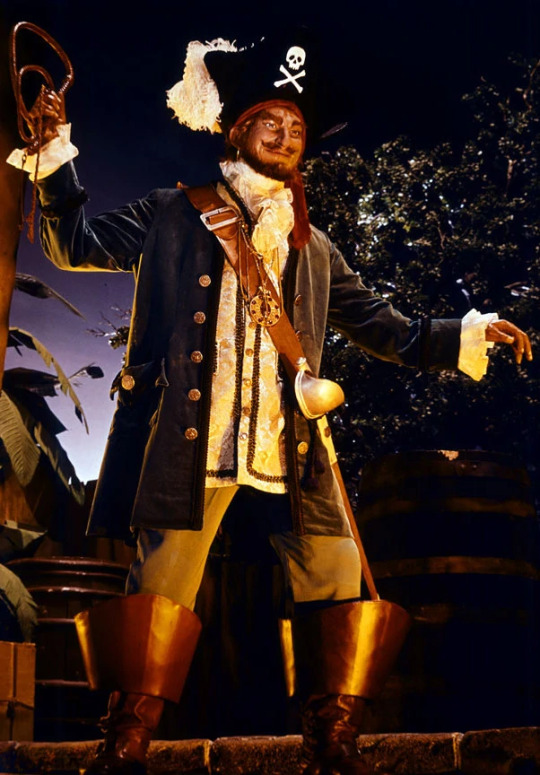
This is a very long post, so I shall cut it here. I will leave you with an image gallery, further reading and a possible promise of a part two if this post does well. Thank you!
(ok so i actually haven’t got any further reading gathered yet. give me like 6 hours and ill fix it in an edit. i promise. i just want to get this post out asap)

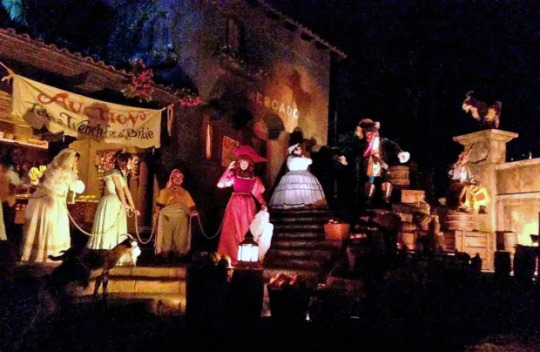
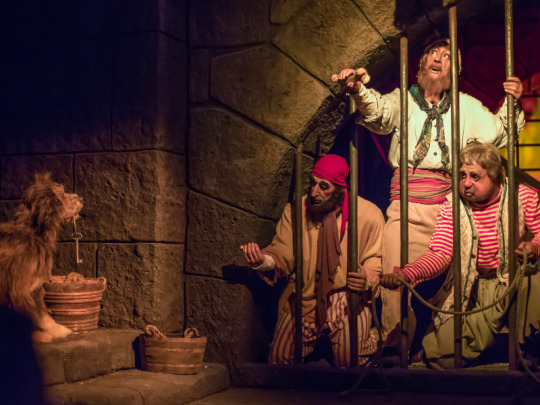
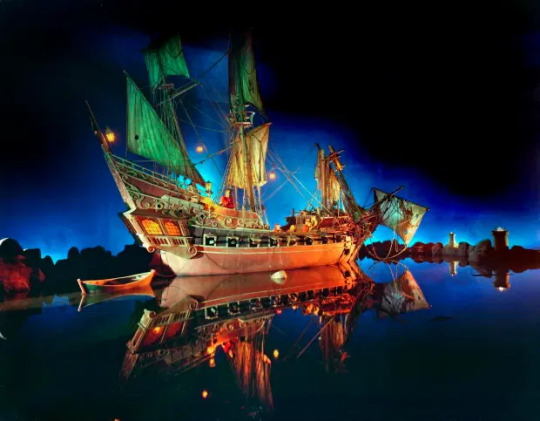
#animatronic#audio animatronics#Audio Animatronic#animatronics#Disney#disney parks#pirates#pirates of the caribbean#redd#captain barbossa#history#long post
17 notes
·
View notes
Photo
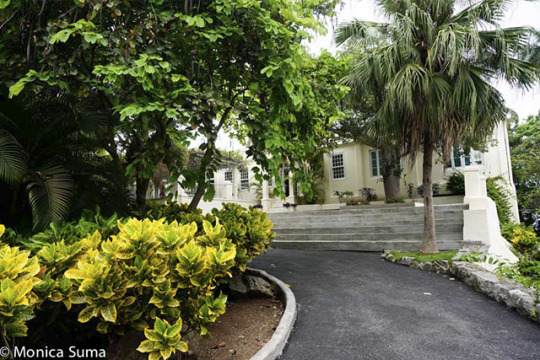
Finca Vigia & Ernest Hemingway
Ernest Hemingway, the American novelist and journalist, fell in love with Cuba the moment he stepped foot on shore. He built his house there, enjoyed many a day fishing Marlin, wrote some of this most celebrated novels on the island, and formed an everlasting bond with the Cuban people. Hemingway left quite a legacy in his beloved country after his death. To this day, his image can be seen throughout Cuba just as much as the country’s own historic icons and leaders.
In 1928, Hemingway set sail from his home in Key West on a voyage towards Spain. He took with him his wife Pauline, their two sons and Pauline’s sister Jinny. Partway through their trip they needed to make a layover in Havana, Cuba, this was Hemingway’s first time seeing this colourful country. The family stayed in the Hotel Ambos Mundos for three days. Which was more than enough time for Hemingway to fall madly in love with Cuba.
However, it was another 4 years later that Hemingway stepped foot on the island again. In 1932, Hemingway brought two of his close friends to Cuba on the legendary ship “Anita”, to join in the annual Marlin run. Also onboard was Hemingway’s hired help and Cuban friend Carlos Gutierrez. Carlos was a master Marlin fisherman, and he taught Hemingway how to correctly rig the baits to catch fish at different depths.
Hemingway loved the experience so much, he purchased a new boat, the “Pilar”, and came back the very next year with Carlos Gutierrez to fish in the Marlin run. In 1933 Hemingway wrote an article for Esquire Magazine entitled “Marlin off the Morro: A Cuban letter”, talking all about the things he has experienced during this time.
Over the next few years, Hemingway and his wife Pauline began to have marital problems, and in 1940, following his earlier divorce, Hemingway moved to Cuba with his new wife Martha. The two purchased a house just outside of Cuba’s capital Havana for an impressive $12,500 USD. They named the grand property Finca Vigia, or ‘lookout house’ and lived there happily with their many cats for 20 years. During his time at Finca Vigia, Hemingway wrote two of his greatest novels, For Whom The Bell Tolls and The Old Man And The Sea.
Hemingway became a celebrated member of the Cuban society as he stayed put in his home long after the relations between Cuba and the United States began to crumble. He fished almost daily from his favourite boat the “Pilar”, he hung out with the locals in his favourite bars in Havana, La Bodeguita del Medio and La Floridita, and he reported on the war in Cuba with a totally unbiased view. As a final act of alliance to the Cubans, Hemingway requested the Cuban government help him repurpose his precious “Pilar” as a fighting ship, so he could ambush German submarines off the coast of Cuba.
Memory of Ernest Hemingway
In 1961, after Hemingway’s death, his wonderful home was taken over by the Cuban government, despite the refusal of his wife Mary. Not long after this repossession, the government quickly forgot about Hemingway’s beloved home, and the property quickly fell into ruin. However, in recent years, the house has been taken in and restored by the Cubans, and can now be visited by the public throughout the year. Here you can see Hemingway’s many fishing memorabilia, hunting trophies, personal artefacts and his grand library. The home/museum is on both the World Monuments Fund list of the 100 Most Endangered Sites, and The National Trust for Historic Preservation’s 11 Most Endangered Places list.
0 notes
Photo

Finca Vigia & Ernest Hemingway
Ernest Hemingway, the American novelist and journalist, fell in love with Cuba the moment he stepped foot on shore. He built his house there, enjoyed many a day fishing Marlin, wrote some of this most celebrated novels on the island, and formed an everlasting bond with the Cuban people. Hemingway left quite a legacy in his beloved country after his death. To this day, his image can be seen throughout Cuba just as much as the country’s own historic icons and leaders.
In 1928, Hemingway set sail from his home in Key West on a voyage towards Spain. He took with him his wife Pauline, their two sons and Pauline’s sister Jinny. Partway through their trip they needed to make a layover in Havana, Cuba, this was Hemingway’s first time seeing this colourful country. The family stayed in the Hotel Ambos Mundos for three days. Which was more than enough time for Hemingway to fall madly in love with Cuba.
However, it was another 4 years later that Hemingway stepped foot on the island again. In 1932, Hemingway brought two of his close friends to Cuba on the legendary ship “Anita”, to join in the annual Marlin run. Also onboard was Hemingway’s hired help and Cuban friend Carlos Gutierrez. Carlos was a master Marlin fisherman, and he taught Hemingway how to correctly rig the baits to catch fish at different depths.
Hemingway loved the experience so much, he purchased a new boat, the “Pilar”, and came back the very next year with Carlos Gutierrez to fish in the Marlin run. In 1933 Hemingway wrote an article for Esquire Magazine entitled “Marlin off the Morro: A Cuban letter”, talking all about the things he has experienced during this time.
Over the next few years, Hemingway and his wife Pauline began to have marital problems, and in 1940, following his earlier divorce, Hemingway moved to Cuba with his new wife Martha. The two purchased a house just outside of Cuba’s capital Havana for an impressive $12,500 USD. They named the grand property Finca Vigia, or ‘lookout house’ and lived there happily with their many cats for 20 years. During his time at Finca Vigia, Hemingway wrote two of his greatest novels, For Whom The Bell Tolls and The Old Man And The Sea.
Hemingway became a celebrated member of the Cuban society as he stayed put in his home long after the relations between Cuba and the United States began to crumble. He fished almost daily from his favourite boat the “Pilar”, he hung out with the locals in his favourite bars in Havana, La Bodeguita del Medio and La Floridita, and he reported on the war in Cuba with a totally unbiased view. As a final act of alliance to the Cubans, Hemingway requested the Cuban government help him repurpose his precious “Pilar” as a fighting ship, so he could ambush German submarines off the coast of Cuba.
Memory of Ernest Hemingway
In 1961, after Hemingway’s death, his wonderful home was taken over by the Cuban government, despite the refusal of his wife Mary. Not long after this repossession, the government quickly forgot about Hemingway’s beloved home, and the property quickly fell into ruin. However, in recent years, the house has been taken in and restored by the Cubans, and can now be visited by the public throughout the year. Here you can see Hemingway’s many fishing memorabilia, hunting trophies, personal artefacts and his grand library. The home/museum is on both the World Monuments Fund list of the 100 Most Endangered Sites, and The National Trust for Historic Preservation’s 11 Most Endangered Places list.
0 notes
Photo
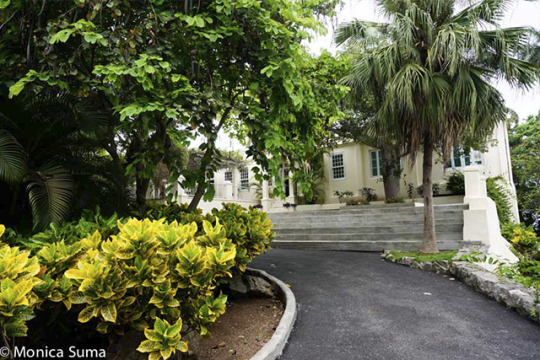
Finca Vigia & Ernest Hemingway
Ernest Hemingway, the American novelist and journalist, fell in love with Cuba the moment he stepped foot on shore. He built his house there, enjoyed many a day fishing Marlin, wrote some of this most celebrated novels on the island, and formed an everlasting bond with the Cuban people. Hemingway left quite a legacy in his beloved country after his death. To this day, his image can be seen throughout Cuba just as much as the country’s own historic icons and leaders.
In 1928, Hemingway set sail from his home in Key West on a voyage towards Spain. He took with him his wife Pauline, their two sons and Pauline’s sister Jinny. Partway through their trip they needed to make a layover in Havana, Cuba, this was Hemingway’s first time seeing this colourful country. The family stayed in the Hotel Ambos Mundos for three days. Which was more than enough time for Hemingway to fall madly in love with Cuba.
However, it was another 4 years later that Hemingway stepped foot on the island again. In 1932, Hemingway brought two of his close friends to Cuba on the legendary ship “Anita”, to join in the annual Marlin run. Also onboard was Hemingway’s hired help and Cuban friend Carlos Gutierrez. Carlos was a master Marlin fisherman, and he taught Hemingway how to correctly rig the baits to catch fish at different depths.
Hemingway loved the experience so much, he purchased a new boat, the “Pilar”, and came back the very next year with Carlos Gutierrez to fish in the Marlin run. In 1933 Hemingway wrote an article for Esquire Magazine entitled “Marlin off the Morro: A Cuban letter”, talking all about the things he has experienced during this time.
Over the next few years, Hemingway and his wife Pauline began to have marital problems, and in 1940, following his earlier divorce, Hemingway moved to Cuba with his new wife Martha. The two purchased a house just outside of Cuba’s capital Havana for an impressive $12,500 USD. They named the grand property Finca Vigia, or ‘lookout house’ and lived there happily with their many cats for 20 years. During his time at Finca Vigia, Hemingway wrote two of his greatest novels, For Whom The Bell Tolls and The Old Man And The Sea.
Hemingway became a celebrated member of the Cuban society as he stayed put in his home long after the relations between Cuba and the United States began to crumble. He fished almost daily from his favourite boat the “Pilar”, he hung out with the locals in his favourite bars in Havana, La Bodeguita del Medio and La Floridita, and he reported on the war in Cuba with a totally unbiased view. As a final act of alliance to the Cubans, Hemingway requested the Cuban government help him repurpose his precious “Pilar” as a fighting ship, so he could ambush German submarines off the coast of Cuba.
Memory of Ernest Hemingway
In 1961, after Hemingway’s death, his wonderful home was taken over by the Cuban government, despite the refusal of his wife Mary. Not long after this repossession, the government quickly forgot about Hemingway’s beloved home, and the property quickly fell into ruin. However, in recent years, the house has been taken in and restored by the Cubans, and can now be visited by the public throughout the year. Here you can see Hemingway’s many fishing memorabilia, hunting trophies, personal artefacts and his grand library. The home/museum is on both the World Monuments Fund list of the 100 Most Endangered Sites, and The National Trust for Historic Preservation’s 11 Most Endangered Places list.
0 notes
Photo
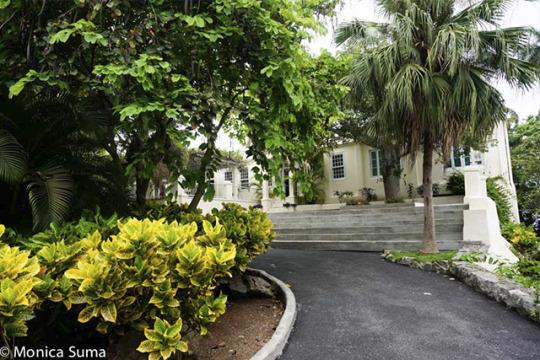
Finca Vigia & Ernest Hemingway
Ernest Hemingway, the American novelist and journalist, fell in love with Cuba the moment he stepped foot on shore. He built his house there, enjoyed many a day fishing Marlin, wrote some of this most celebrated novels on the island, and formed an everlasting bond with the Cuban people. Hemingway left quite a legacy in his beloved country after his death. To this day, his image can be seen throughout Cuba just as much as the country’s own historic icons and leaders.
In 1928, Hemingway set sail from his home in Key West on a voyage towards Spain. He took with him his wife Pauline, their two sons and Pauline’s sister Jinny. Partway through their trip they needed to make a layover in Havana, Cuba, this was Hemingway’s first time seeing this colourful country. The family stayed in the Hotel Ambos Mundos for three days. Which was more than enough time for Hemingway to fall madly in love with Cuba.
However, it was another 4 years later that Hemingway stepped foot on the island again. In 1932, Hemingway brought two of his close friends to Cuba on the legendary ship “Anita”, to join in the annual Marlin run. Also onboard was Hemingway’s hired help and Cuban friend Carlos Gutierrez. Carlos was a master Marlin fisherman, and he taught Hemingway how to correctly rig the baits to catch fish at different depths.
Hemingway loved the experience so much, he purchased a new boat, the “Pilar”, and came back the very next year with Carlos Gutierrez to fish in the Marlin run. In 1933 Hemingway wrote an article for Esquire Magazine entitled “Marlin off the Morro: A Cuban letter”, talking all about the things he has experienced during this time.
Over the next few years, Hemingway and his wife Pauline began to have marital problems, and in 1940, following his earlier divorce, Hemingway moved to Cuba with his new wife Martha. The two purchased a house just outside of Cuba’s capital Havana for an impressive $12,500 USD. They named the grand property Finca Vigia, or ‘lookout house’ and lived there happily with their many cats for 20 years. During his time at Finca Vigia, Hemingway wrote two of his greatest novels, For Whom The Bell Tolls and The Old Man And The Sea.
Hemingway became a celebrated member of the Cuban society as he stayed put in his home long after the relations between Cuba and the United States began to crumble. He fished almost daily from his favourite boat the “Pilar”, he hung out with the locals in his favourite bars in Havana, La Bodeguita del Medio and La Floridita, and he reported on the war in Cuba with a totally unbiased view. As a final act of alliance to the Cubans, Hemingway requested the Cuban government help him repurpose his precious “Pilar” as a fighting ship, so he could ambush German submarines off the coast of Cuba.
Memory of Ernest Hemingway
In 1961, after Hemingway’s death, his wonderful home was taken over by the Cuban government, despite the refusal of his wife Mary. Not long after this repossession, the government quickly forgot about Hemingway’s beloved home, and the property quickly fell into ruin. However, in recent years, the house has been taken in and restored by the Cubans, and can now be visited by the public throughout the year. Here you can see Hemingway’s many fishing memorabilia, hunting trophies, personal artefacts and his grand library. The home/museum is on both the World Monuments Fund list of the 100 Most Endangered Sites, and The National Trust for Historic Preservation’s 11 Most Endangered Places list.
0 notes
Photo
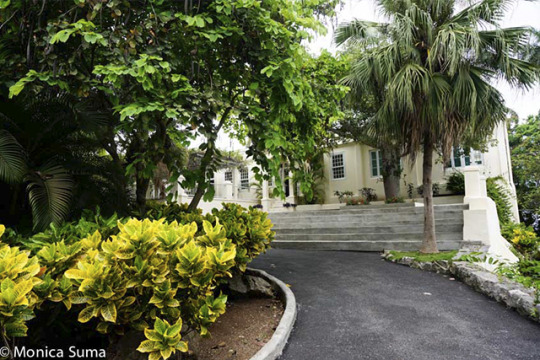
Finca Vigia & Ernest Hemingway
Ernest Hemingway, the American novelist and journalist, fell in love with Cuba the moment he stepped foot on shore. He built his house there, enjoyed many a day fishing Marlin, wrote some of this most celebrated novels on the island, and formed an everlasting bond with the Cuban people. Hemingway left quite a legacy in his beloved country after his death. To this day, his image can be seen throughout Cuba just as much as the country’s own historic icons and leaders.
In 1928, Hemingway set sail from his home in Key West on a voyage towards Spain. He took with him his wife Pauline, their two sons and Pauline’s sister Jinny. Partway through their trip they needed to make a layover in Havana, Cuba, this was Hemingway’s first time seeing this colourful country. The family stayed in the Hotel Ambos Mundos for three days. Which was more than enough time for Hemingway to fall madly in love with Cuba.
However, it was another 4 years later that Hemingway stepped foot on the island again. In 1932, Hemingway brought two of his close friends to Cuba on the legendary ship “Anita”, to join in the annual Marlin run. Also onboard was Hemingway’s hired help and Cuban friend Carlos Gutierrez. Carlos was a master Marlin fisherman, and he taught Hemingway how to correctly rig the baits to catch fish at different depths.
Hemingway loved the experience so much, he purchased a new boat, the “Pilar”, and came back the very next year with Carlos Gutierrez to fish in the Marlin run. In 1933 Hemingway wrote an article for Esquire Magazine entitled “Marlin off the Morro: A Cuban letter”, talking all about the things he has experienced during this time.
Over the next few years, Hemingway and his wife Pauline began to have marital problems, and in 1940, following his earlier divorce, Hemingway moved to Cuba with his new wife Martha. The two purchased a house just outside of Cuba’s capital Havana for an impressive $12,500 USD. They named the grand property Finca Vigia, or ‘lookout house’ and lived there happily with their many cats for 20 years. During his time at Finca Vigia, Hemingway wrote two of his greatest novels, For Whom The Bell Tolls and The Old Man And The Sea.
Hemingway became a celebrated member of the Cuban society as he stayed put in his home long after the relations between Cuba and the United States began to crumble. He fished almost daily from his favourite boat the “Pilar”, he hung out with the locals in his favourite bars in Havana, La Bodeguita del Medio and La Floridita, and he reported on the war in Cuba with a totally unbiased view. As a final act of alliance to the Cubans, Hemingway requested the Cuban government help him repurpose his precious “Pilar” as a fighting ship, so he could ambush German submarines off the coast of Cuba.
Memory of Ernest Hemingway
In 1961, after Hemingway’s death, his wonderful home was taken over by the Cuban government, despite the refusal of his wife Mary. Not long after this repossession, the government quickly forgot about Hemingway’s beloved home, and the property quickly fell into ruin. However, in recent years, the house has been taken in and restored by the Cubans, and can now be visited by the public throughout the year. Here you can see Hemingway’s many fishing memorabilia, hunting trophies, personal artefacts and his grand library. The home/museum is on both the World Monuments Fund list of the 100 Most Endangered Sites, and The National Trust for Historic Preservation’s 11 Most Endangered Places list.
0 notes
Photo

Finca Vigia & Ernest Hemingway
Ernest Hemingway, the American novelist and journalist, fell in love with Cuba the moment he stepped foot on shore. He built his house there, enjoyed many a day fishing Marlin, wrote some of this most celebrated novels on the island, and formed an everlasting bond with the Cuban people. Hemingway left quite a legacy in his beloved country after his death. To this day, his image can be seen throughout Cuba just as much as the country’s own historic icons and leaders.
In 1928, Hemingway set sail from his home in Key West on a voyage towards Spain. He took with him his wife Pauline, their two sons and Pauline’s sister Jinny. Partway through their trip they needed to make a layover in Havana, Cuba, this was Hemingway’s first time seeing this colourful country. The family stayed in the Hotel Ambos Mundos for three days. Which was more than enough time for Hemingway to fall madly in love with Cuba.
However, it was another 4 years later that Hemingway stepped foot on the island again. In 1932, Hemingway brought two of his close friends to Cuba on the legendary ship “Anita”, to join in the annual Marlin run. Also onboard was Hemingway’s hired help and Cuban friend Carlos Gutierrez. Carlos was a master Marlin fisherman, and he taught Hemingway how to correctly rig the baits to catch fish at different depths.
Hemingway loved the experience so much, he purchased a new boat, the “Pilar”, and came back the very next year with Carlos Gutierrez to fish in the Marlin run. In 1933 Hemingway wrote an article for Esquire Magazine entitled “Marlin off the Morro: A Cuban letter”, talking all about the things he has experienced during this time.
Over the next few years, Hemingway and his wife Pauline began to have marital problems, and in 1940, following his earlier divorce, Hemingway moved to Cuba with his new wife Martha. The two purchased a house just outside of Cuba’s capital Havana for an impressive $12,500 USD. They named the grand property Finca Vigia, or ‘lookout house’ and lived there happily with their many cats for 20 years. During his time at Finca Vigia, Hemingway wrote two of his greatest novels, For Whom The Bell Tolls and The Old Man And The Sea.
Hemingway became a celebrated member of the Cuban society as he stayed put in his home long after the relations between Cuba and the United States began to crumble. He fished almost daily from his favourite boat the “Pilar”, he hung out with the locals in his favourite bars in Havana, La Bodeguita del Medio and La Floridita, and he reported on the war in Cuba with a totally unbiased view. As a final act of alliance to the Cubans, Hemingway requested the Cuban government help him repurpose his precious “Pilar” as a fighting ship, so he could ambush German submarines off the coast of Cuba.
Memory of Ernest Hemingway
In 1961, after Hemingway’s death, his wonderful home was taken over by the Cuban government, despite the refusal of his wife Mary. Not long after this repossession, the government quickly forgot about Hemingway’s beloved home, and the property quickly fell into ruin. However, in recent years, the house has been taken in and restored by the Cubans, and can now be visited by the public throughout the year. Here you can see Hemingway’s many fishing memorabilia, hunting trophies, personal artefacts and his grand library. The home/museum is on both the World Monuments Fund list of the 100 Most Endangered Sites, and The National Trust for Historic Preservation’s 11 Most Endangered Places list.
0 notes
Photo
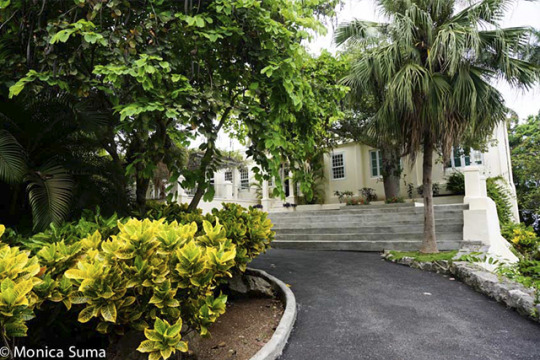
Finca Vigia & Ernest Hemingway
Ernest Hemingway, the American novelist and journalist, fell in love with Cuba the moment he stepped foot on shore. He built his house there, enjoyed many a day fishing Marlin, wrote some of this most celebrated novels on the island, and formed an everlasting bond with the Cuban people. Hemingway left quite a legacy in his beloved country after his death. To this day, his image can be seen throughout Cuba just as much as the country’s own historic icons and leaders.
In 1928, Hemingway set sail from his home in Key West on a voyage towards Spain. He took with him his wife Pauline, their two sons and Pauline’s sister Jinny. Partway through their trip they needed to make a layover in Havana, Cuba, this was Hemingway’s first time seeing this colourful country. The family stayed in the Hotel Ambos Mundos for three days. Which was more than enough time for Hemingway to fall madly in love with Cuba.
However, it was another 4 years later that Hemingway stepped foot on the island again. In 1932, Hemingway brought two of his close friends to Cuba on the legendary ship “Anita”, to join in the annual Marlin run. Also onboard was Hemingway’s hired help and Cuban friend Carlos Gutierrez. Carlos was a master Marlin fisherman, and he taught Hemingway how to correctly rig the baits to catch fish at different depths.
Hemingway loved the experience so much, he purchased a new boat, the “Pilar”, and came back the very next year with Carlos Gutierrez to fish in the Marlin run. In 1933 Hemingway wrote an article for Esquire Magazine entitled “Marlin off the Morro: A Cuban letter”, talking all about the things he has experienced during this time.
Over the next few years, Hemingway and his wife Pauline began to have marital problems, and in 1940, following his earlier divorce, Hemingway moved to Cuba with his new wife Martha. The two purchased a house just outside of Cuba’s capital Havana for an impressive $12,500 USD. They named the grand property Finca Vigia, or ‘lookout house’ and lived there happily with their many cats for 20 years. During his time at Finca Vigia, Hemingway wrote two of his greatest novels, For Whom The Bell Tolls and The Old Man And The Sea.
Hemingway became a celebrated member of the Cuban society as he stayed put in his home long after the relations between Cuba and the United States began to crumble. He fished almost daily from his favourite boat the “Pilar”, he hung out with the locals in his favourite bars in Havana, La Bodeguita del Medio and La Floridita, and he reported on the war in Cuba with a totally unbiased view. As a final act of alliance to the Cubans, Hemingway requested the Cuban government help him repurpose his precious “Pilar” as a fighting ship, so he could ambush German submarines off the coast of Cuba.
Memory of Ernest Hemingway
In 1961, after Hemingway’s death, his wonderful home was taken over by the Cuban government, despite the refusal of his wife Mary. Not long after this repossession, the government quickly forgot about Hemingway’s beloved home, and the property quickly fell into ruin. However, in recent years, the house has been taken in and restored by the Cubans, and can now be visited by the public throughout the year. Here you can see Hemingway’s many fishing memorabilia, hunting trophies, personal artefacts and his grand library. The home/museum is on both the World Monuments Fund list of the 100 Most Endangered Sites, and The National Trust for Historic Preservation’s 11 Most Endangered Places list.
0 notes